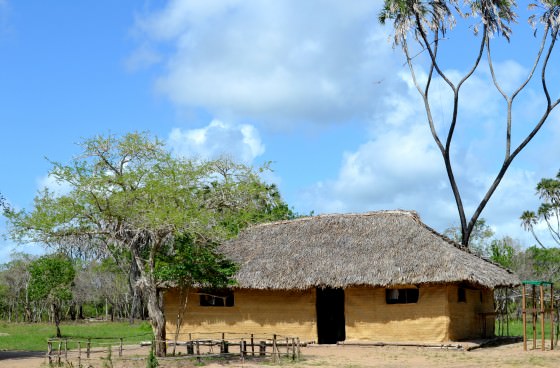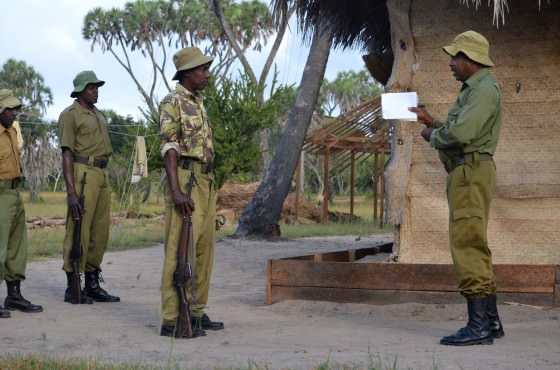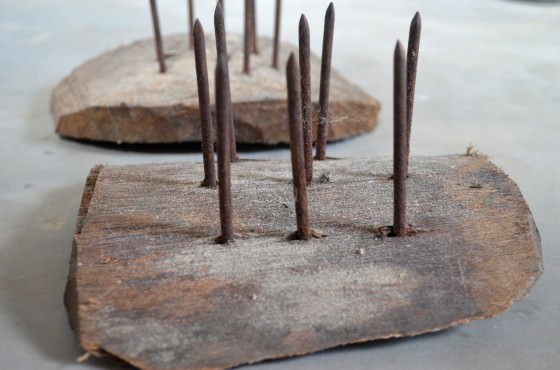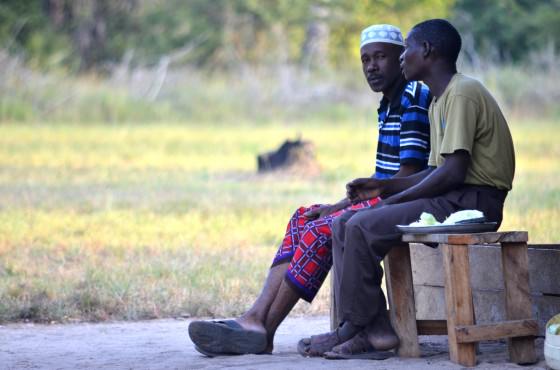[caption id="attachment_1196" align="aligncenter" width="560" caption="Farouk camp

Work at Amu begins early so as to avoid the intense afternoon heat. The camp begins to stir at 5:00am, when the driver sets off to collect the casual labour from town. Around this time the cook also starts to prepare breakfast. By 6:00am the entire camp is dressed and ready for breakfast. After breakfast, the rangers attend a parade/de-briefing from their headman. The short drill, which pre-empts their debrief is a source of pride for the men who do their best to put on a crisp performance. Once they have demonstrated several rehearsed manoeuvres, the men stand to attention while they are addressed, which gives the headman an opportunity to discuss the day’s activities and ensure that everyone is on the same page.

Directly after the parade, they set out on patrol. Typically, they drive out to a predetermined area of the ranch and then set out on foot. They are looking for any sign of illegal activity, so as they follow animal paths they look out for any evidence of human presence (footprints and freshly cut branches etc.), snares and traps. Poachers will usually follow animal tracks and look for natural choke points where they can set traps. Their objective is to find spots where the animal is forced to walk through a narrow entrance, perhaps between two bushes, to increase their chances. The Amu team has collected a huge range of traps. Some are simple spring-released nooses that are triggered when an animal walks across them, but others are more sinister. Recently, a series of hippo pits were discovered on a track leading out of Mkumbi river. Dug about 6 feet deep, the poachers had lined the bottom with a bed of nails driven through wooden blocks. The pits were then covered with branches and sand to blend in with the rest of the path. Had they not been discovered, they would have inevitably caused a horrifying death for an innocent hippo.

Aside from looking out for traps and human signs, the men are mindful that they share this bush with some very dangerous animals. Elephants have been spotted bordering the ranch and there is a very healthy population of buffalo and lion. Lions are typically scared of, and avoid, humans but buffaloes are more confrontational. Responsible for over 200 deaths a year in Africa, they are taken seriously. When the men encounter buffaloes in the bush, they give the animals a wide berth, as surprising a buffalo can lead to a charge, which is often fatal.
Since the team is limited in what they can see from the ground, they work closely with the Amu pilot, Nick Trent, who patrols the ranch from above. The men carry a GPS and radio, so Nick is able to radio them with coordinates if he notices anything suspicious from the air. This allows them to respond immediately, giving them a much greater chance of apprehending poachers and illegal loggers.
At the end of the long day they settle back into the rhythm of coastal living. Uniforms and leather boots are exchanged for kikois (traditional cloth with coloured bands or plaid pattern worn around the waist much like a sarong) and flip-flops and the men sit in the shade and reflect on life.

You can follow events on Amu by "liking" the Lamu Conservation Trust on Facebook.
To find out more specific information about Project Amu and how you can support this initiative, contact the David Sheldrick Wildlife Trust.